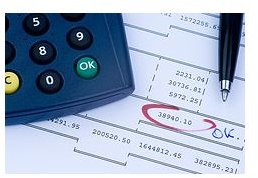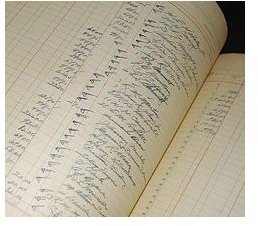How to Prepare a General Ledger - Using Accounts and Sub-Accounts
What is a General Ledger?
Every aspect of your business needs to be recorded in order for it to be analyzed for accuracy. This is where the general ledger comes in. A general ledger consists of every account from your chart of accounts. Journal entries made into the general ledger help to determine your assets, liabilities as well as net profits (or losses). A general ledger also is key in creating your company’s balance sheet and income statement each month.
A general ledger consists of the main elements of your business:
- Assets
- Liabilities
- Owner Equity
- Income or Sales Revenues
- Expenses
Each of these main general ledger accounts has many sub-accounts that are utilized to compile the totals in the main accounts. But how do these relate to preparing a general ledger? A general ledger comparison might be if you were baking a cake. You need ingredients like flour, eggs, sugar, and baking powder to get to your final result—the cake itself. Your general ledger utilizes sub-accounts as ingredients that flow into the main general ledger accounts.
Your general ledger sub-accounts are also a way for you to audit and analyze the financial elements of your business.
General Ledger Sub-Accounts
Why are general ledger (GL) sub-accounts even necessary may be your first question. Let’s take your main general ledger asset account and analyze typical sub-accounts. Under your GL asset account, sub-accounts include items like cash in bank, accounts receivables, inventory, and other assets like equipment, land, buildings, and other assets such as vehicles, furniture and fixtures. A non-accounting person may say why not just post everything into one asset account and be done?
For financial accounting to be accurate, sub-accounts are needed to help tax professionals determine what’s in the main GL asset account. Sub-accounts are totaled and listed on your balance sheet each month. Without sub-accounts, you wouldn’t be able to identify how much cash in bank you have, who owes you money, how much inventory you have or what you paid for other assets. Sub-accounts are also needed to help depreciate your assets at tax time as a business expense.
Examples of GL Main and Sub-Accounts
Looking at expenses, here is an example of GL main and sub-accounts and how they relate to one another:
GL Main Account: Expenses – The total number in your GL expense account is compiled from the numbers contained in your sub-accounts. Sub-accounts would include items like:
- Variable Expenses – These are broken down into further sub-accounts and change each month. Items like wages, shipping, commissions, and monthly costs to maintain certain elements of your business that are variable.
- Fixed Expenses – While fixed expenses also change each month, the reason they are “fixed” is because they are operating expenses that are constant in any given business. Fixed expense accounts include:
- Employee Benefits
- Payroll Taxes
- Rent
- Utilities
- Telephone
- Advertising
- Legal & Accounting Fees
- Donations
- Office Supplies
Your variable and fixed expense sub-account totals represent the total of your operating expenses.
- Variable Expenses = $1,000
- Fixed Expenses = $1,500
- Total Operating Expenses = $2,500
In order for the general ledger to be effective, sub-accounts must be utilized to create totals in the GL main accounts. Think of the GL main expense account as your finished cake. In this example, it contains all the expense transactions from every aspect of your business to determine your total operating expenses.
Creating a General Ledger

Most business accounting software like Quickbooks can aid you in creating the basics of a general ledger. First a chart of accounts is created. From that list of accounts, beginning balances to each general ledger account is inputted. Even a new business will have beginning balances to some general ledger accounts like inventory you’ve purchased, equipment, cash in bank, and even payables due. If an existing business is purchased, you may have beginning balances for many GL sub-accounts.
Once the general ledger is created, journal entries are made when transactions occur in your business and journal entries fall into the appropriate sub or main GL account. Keep in mind, not all GL main accounts have sub-accounts. For example, some businesses have more than one bank account so their cash in bank GL account would total of all the money in every bank sub-account. On the other hand, if your business only has one bank account, there would be no cash in bank sub-account.
General Ledger to Income Statement
In any given month as journal entries are made for sales, expenses, liabilities and payables due, these entries are compiling information that will transfer from your general ledger to your income statement. Without the basics of a general ledger, an income statement could not be created accurately.
Items pulled from your general ledger to your income statement might look like this:
- Sales – The total sum of all your sales includes sub-account GL entries for every product or service you sell; in other words, all your revenues.
- Cost of Sales – This is the total sum of what it cost to sell your product or service. For example if you sell cakes and it costs you $10 to make each cake, that is your cost of sale for each cake you sell.
- Variable Expenses – This is the sum of all your monthly variable expenses taken from variable expense sub-accounts.
- Fixed Expenses – This total represents the total of all of your fixed GL expense sub-accounts.
- Profit (or Loss) – This is the total of all of your sales revenues, minus the cost of sales, variable, and fixed expenses. If it’s a positive number, then your income statement shows a profit.
General Ledger to Balance Sheet
Because your balance sheet is a snapshot of your business at any given time, it needs the totals from your general ledger sub-accounts. All of your asset sub-accounts are compiled and listed along with your liabilities and monthly profit or loss (from your income statement) to determine net worth.
During the month, as journal entries are made into the general ledger, they must be accurate and equal (debits and credits) to create a true balance sheet. Incorrect journal entries will result in a balance sheet that does not balance.
Summing Up the General Ledger
To better help you understand the basics of a general ledger, especially if you use the accounting accrual method, you’ll find an MS Excel General Ledger Template in our Media Gallery. This example shows a sampling of how journal entries are made and then transferred to an income statement or balance sheet. Although the template is simple, it offers an effective example of why journal entries are needed to help determine your bottom line each month in every account or sub-account related to your business.
This post is part of the series: General Ledger Basics and Examples
Learn how to prepare, read and analyze general ledgers. Also, find examples and free templates you can download for personal or business use.
